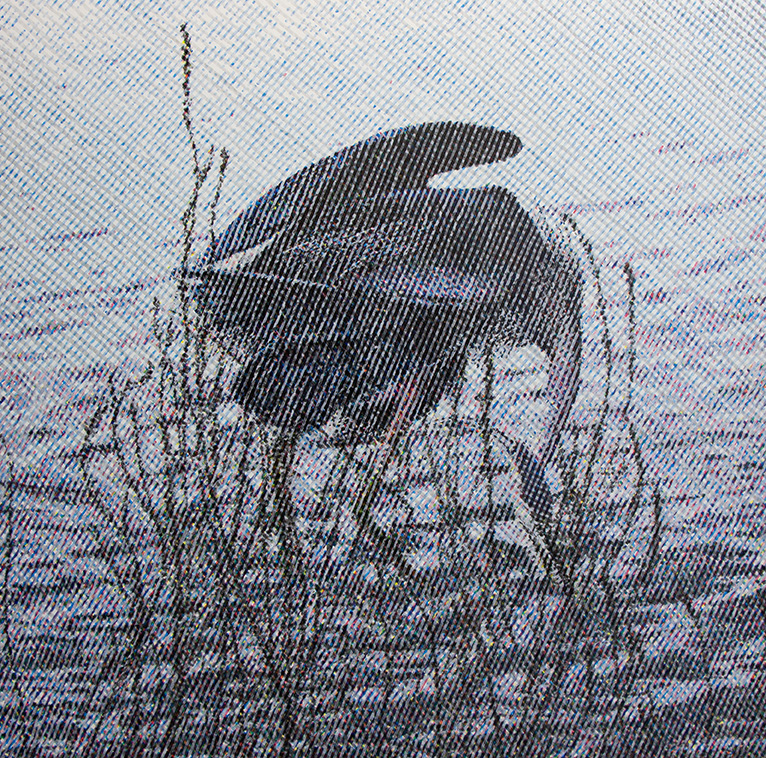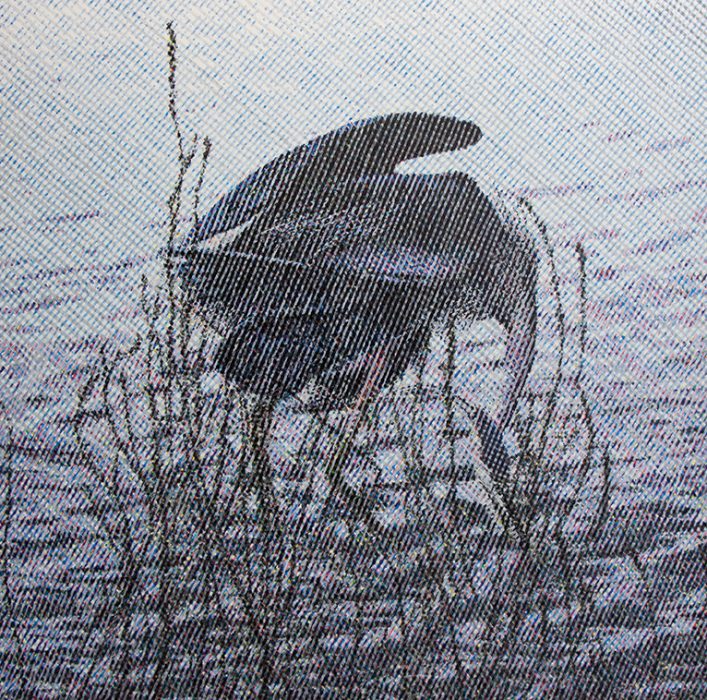April 10, 2025

Written and recorded by Gallery & Curatorial Fellow Aislinn Doherty

In Audubon Remix: Heron from 2021, Michael Zachary uses acrylic on panel to depict a representation of a heron from the 19th-century bird guide, “The Birds of America,” back in its natural landscape. A print copy of the book sits just below the painting, flipped open to the original Audubon Heron print.
This piece is part of a collection of paintings where Zachary reuses images from the Audubon guide to draw attention to the unnatural nature of the original prints and the connection they have to the colonialist enterprise. He discusses that he first became interested in this subject as his early morning commute to work enabled him to see the multitude of dead birds that fell victim to glass buildings during the night. He emphasizes that modern cities have become bird murder devices and, instead of working to solve the problem, people have created whole unseen mechanisms to sweep away the evidence. This experience prompted him to begin researching migratory bird routes, habitats, and adaptability to city environments, which led him to the famous Audubon prints.
These prints, which he describes as the “quintessential American bird prints,” are visual representations of dead birds that were bent and shaped to appear as if in their natural habitat for the purposes of the print portfolio. For this process, Audubon would shoot a bird, bring it back to his studio, break its bone to build a shape that would fit in the size constraints, and make his drawing off of that pose. The dichotomy between using these prints to uplift nature and the reality that he was actually putting it in a strict and violent box left Zachary wanting to emphasize the unnaturalness of the silhouettes. He argues that while these images may appear as a celebration of nature, they are actually an example of Manifest Destiny and the underlying colonialism that spearheaded this belief. In this parallel series, he takes the original Audubon birds, broken and contorted, and places them in a contemporary, natural landscape as if conjuring a ghost that the viewer cannot escape.
With this painting, Zachary wants the viewer to feel uncomfortable. He emulates the forced silhouette of the original Audubon Heron set in a contemporary landscape as a way to emphasize that these stress positions have been used by oppressors throughout history. Because of the darker nature of this painting, he has had some difficulty getting it shown in a gallery setting. How does your interpretation of this piece change once understanding the historical context? How does the inclusion of the Audubon book below the painting affect the painting’s impact on viewers?